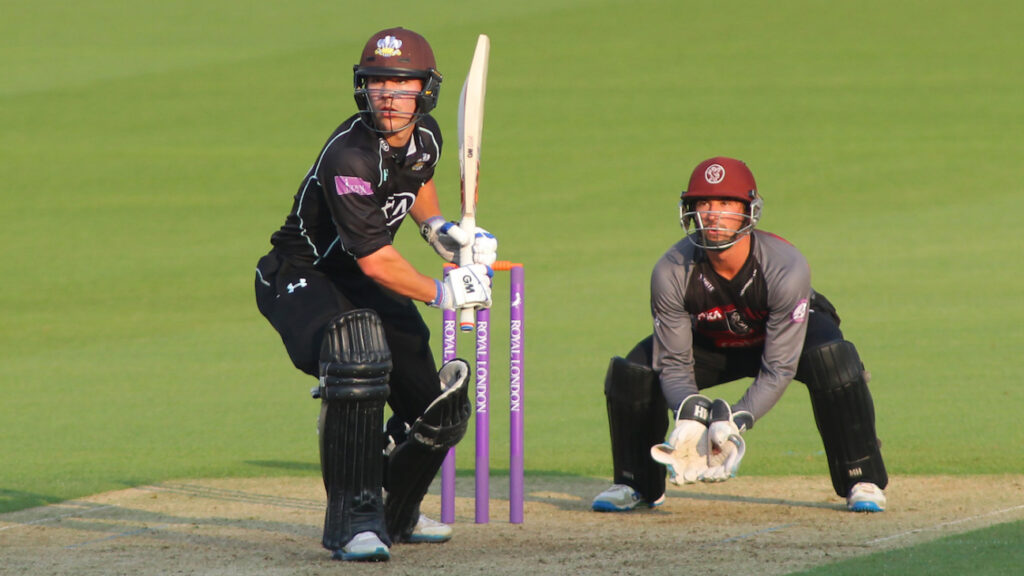And How They Differ From Routines

One of the lawn bowlers I work with recently asked me this question during a session. “What is the difference between a pre-performance routine and having some superstitions?” So good was the question that I decided to expand the answer that I gave her into this feature article on Sporting Superstitions.
Sporting Superstitions Versus Routines
In the work we do as sport psychologists and performance psychologists, we use routines frequently. I suspect I use them more often than my colleagues at Condor Performance due to my extreme “you can’t control your feelings/thoughts” approach to consulting.
For a much deeper dive into routines it’s probably better if you read these articles here and here but here is a quick summary. Routines are basically just premeditated series of actions. I tend to leave thoughts out of the equation. These action sequences vary mostly in terms of duration and timing. Some routines are very short (a few seconds) whilst others can take hours.
And we try to name them accordingly. For example, the routine that tennis players might use to get themselves mentally ready to receive the ball might be labelled a Pre-Point Routine or Pre-Receiving Routine. However, the longer routine before the start of the competition might be called a Pre-Match Routine. The middle part of this can be changed depending on the sport. For example combat sports athletes might have a Pre-Fight Routine.
Guaranteeableness (Made Up Word)
But despite these differences, good routines have one thing in common. They are built around actions that are intended to be guaranteeable. I typically prefer the word guaranteeable to controllable. Because the actions are guaranteeable then they can be entirely relied upon in any and all situations.
This is especially true when they are practised frequently and become automatic. And it is here that the majority of the benefit is found for this particular mental skill. In highly pressurised situations knowing that you can execute these predetermined actions amidst the chaos is the biggest contributor to composure. And composure is the biggest contributor to consistency. And consistency is the biggest contributor to sustained excellence.
Whether or not to include premeditated thoughts such as cue words in these routines is a contentious issue at the moment in international sport psychology circles. My issue with including any cognitive steps in these routines is that they simply are not guaranteeable. It’s all good and well in the calmness of practice to say to yourself “watch the ball”. But can you guarantee to remember to think this when you are feeling nauseous from nerves?
Actions Are Far More Reliable Than Thoughts
Instead, I’d rather my clients include the more reliable step of “widening their eyelids” (not saying to themselves ‘widen eyelids’, actually completing this micro action) in this example.

This way the cue word “watch the ball” becomes a bonus and not a requirement. If it’s used then great. If it’s not used then no biggie.
In doing this, we avoid what is known as metacognition. Metacognition is the process whereby you start thinking about your thoughts. Basically worrying about being worried. And it can snowball. Worrying about worrying about being worried etc.
So for the above example metacognitive worry might look like this. “Oh bugger I forgot to think to myself watch the ball”. And suddenly attention for simply completing the actions is diverted to a cognitive process that is completely unnecessary in order to complete the motor skill. You don’t need to have any dental-related thoughts before, during or after brushing your teeth. You just need to complete the action.
A Difference In Flexibility
One of the major differences between sporting routines and sporting superstitions is flexibility.
Most sporting superstitions are concerningly inflexible. Because good routines are designed (not accidental) flexibility can be embedded from the very start. For example in the longer Pre-Performance Routines there will not be a set order for the actions. So they may have a checklist of several activities they want (not need to, want to) to complete. For example, listening to some music, or maybe doing mindfulness. But the duration and order of these can change if required.
For sporting superstitions, not so much. If an athlete feels like they need to put the left sock on before the right sock to play well then there’s not a lot of wiggle room in that. In this example lies another clue about the difference between sporting superstitions and routines. Although routines are certainly designed as a performance optimiser we are quick to point out that they’re not magic. In other words, the routine doesn’t cause a good performance – there is simple a correlation. The difference between correlation and causation is brilliantly explained in this four minute video. Most athletes who use sporting superstitions do so because they actually believe it will result in a better performance. This is mentally damaging on all sorts of levels. If you are one of these performers then it might worth getting in touch with us.
Famous Sporting Superstitions
I thought it might be nice to wrap up this article with some of the most famous sporting superstitions of all time. These two Bleacher Reports articles go through 25 famous and 50 famous Sporting Superstitions. My favourites from these lists are:
Richie Ashburn Slept with Baseball Bats
Hall of Fame slugger Richie Ashburn had his own way of keeping a hot streak hot. Anytime he had a particularly good day at the plate, he would be sure to use the same bat for as long as the success would last. And Ashburn went to extraordinary lengths to remain in possession of his lucky bats. Concerned that equipment managers couldn’t be trusted to keep his bat separate from all the other bats, Ashburn would take his bat of the moment with him each night. He even made room in his own bed for his lucky bats.
Wade Boggs Pre-Game Chicken.
If you want to know the secret to making it into the Baseball Hall of Fame, 2005 inductee Wade Boggs might tell you it has something to do with poultry. In 1999 he revealed his entire career had been fuelled not by steroids, but by chicken! Legend has it that during his rookie season Boggs recognised some kind of correlation between his chowing down on chicken and games with multiple hits. He stuck to his superstitious diet religiously and his wife accumulated more than 40 chicken recipes for the 3,000 chicken meals she was tasked with producing each season.
Are You Curious About Our 1-on-1 Psychology Services?
Has this article piqued your interest in improving either your mental health or mental aspects of your sport/performance? Then Get In Touch via one of these methods: ⏩ Email us directly at info@condorperformce.com and let us know more about you and how we can help. ⏩ Fill in one of our four Mental Toughness Questionnaires and tick the box at the end when it asks if you’d like to receive info about our services.
